Our day started at the Osaka Museum of History. If you ever get the chance to visit Osaka, we highly recommend this museum.
We started our history lesson on the 10th floor, where we saw a partial reconstruction of the Daigokuden (the main palace building) of the Nara period of Naniwa Palace. We saw many mannequins dressed in period court dress and life size replicas of the 70 cm pillars.
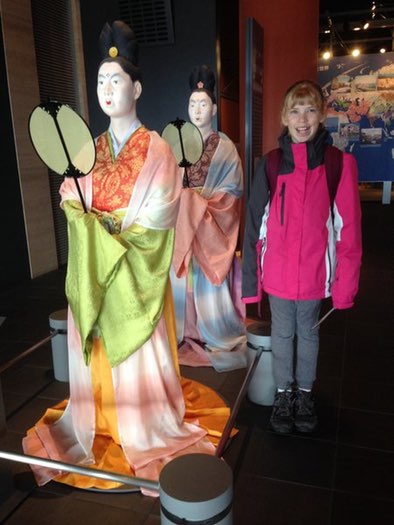
From the observation area we looked across to the remains of this former site, but it was pleasing to see it has been cared for, so the story lives on today.
Next we learnt about the Hongan-ji temple. It was an unsettling period (Edo Period) of fighting with Lord Oda Nobunaga. We really enjoyed seeing lots of miniature models (1/20th scale) of the townspeople in Naniwa. This model is a reconstruction of the latter Naniwa Palace.
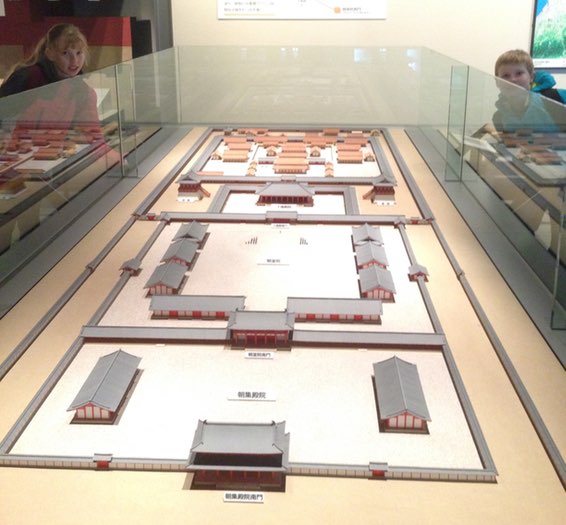
We liked this medieval street in Sakai in 1568. In particular the stones that held the roof on, which was similar to the Samaurai house we saw in Matsumoto.
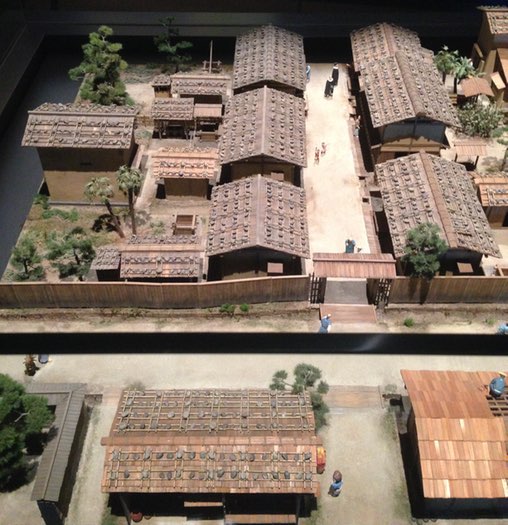
The Temma Fruit and Vegetable Market was cool with displays of all the different produce. This Market was built primarily for the distribution of produce from farms and villages surrounding Osaka. Apparently all prices were set by this Market which caused some conflict.
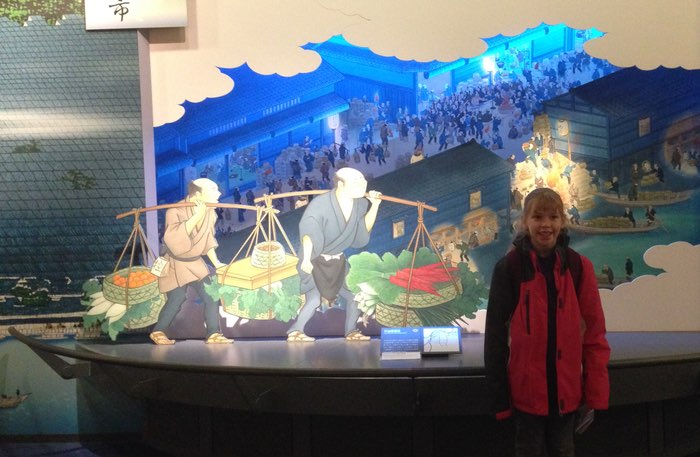
We liked this model of the township of Temba from 1854-1860, in the area near Yodobashi. The detail of the miniature models was quite extraordinary.
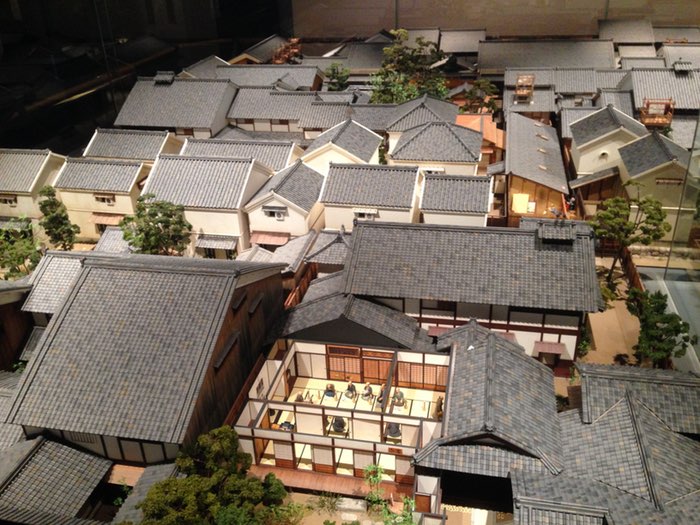
On the 8th floor we had the best time being archaeologists. We started identifying the real artefact from pieces that had been dug up. The next activity we were given pieces of a vase and had to piece it back together using clues from the markings on the vase.
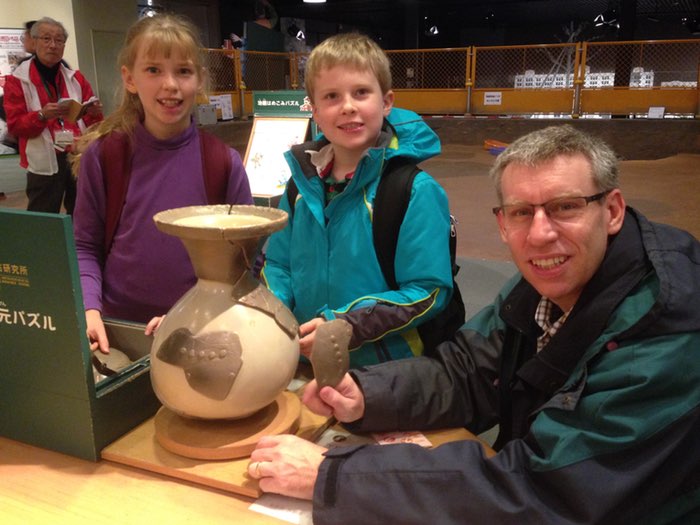
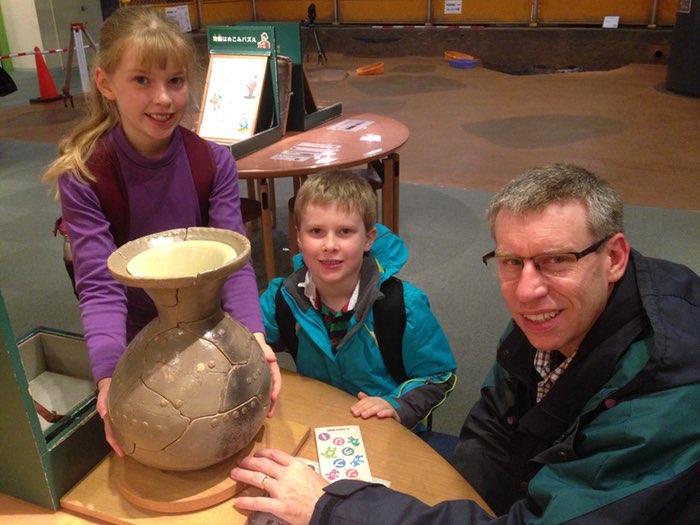
We then enjoyed a puzzle putting together the layers of earth underneath Osaka.
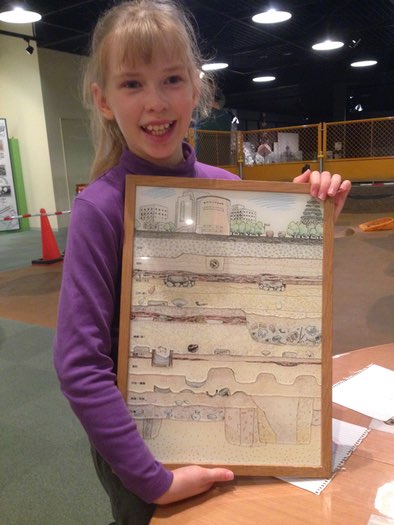
The boys did a puzzle of the layout of the Naniwa Palace.
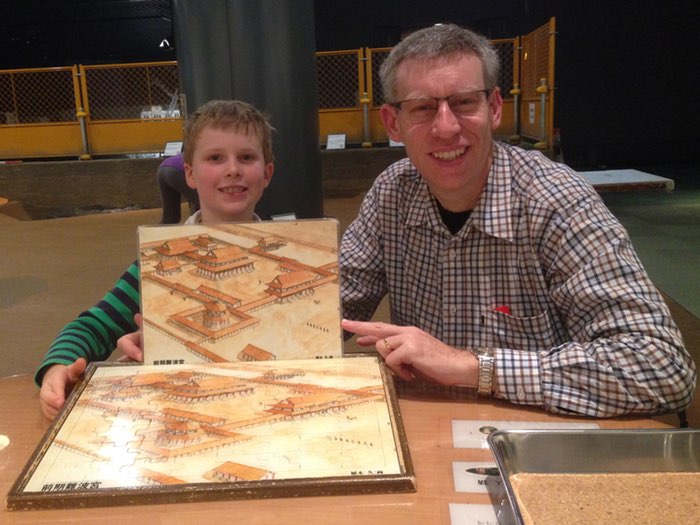
The girls did the other puzzle of the Nara period Palace.
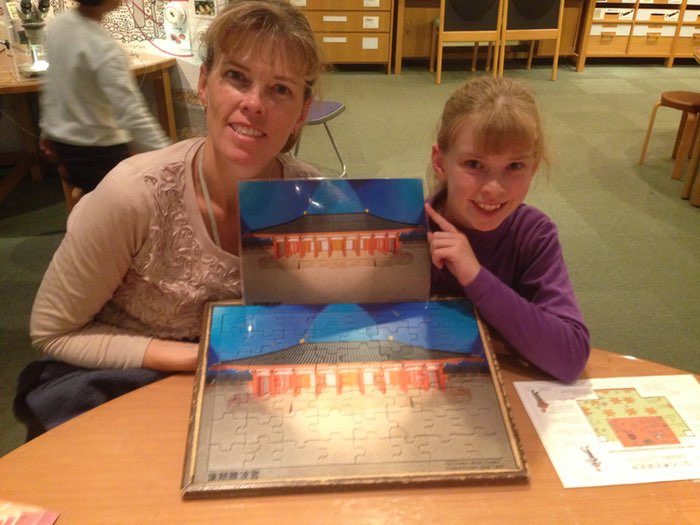
James and Jennifer then embarked on an archaeological mapping exercise where they were given a map with some findings and had to search the life sized excavation area to find what had not yet been mapped. They did a rather fine job and were rewarded with certificates from the Tesearch Director, Dr Suko.
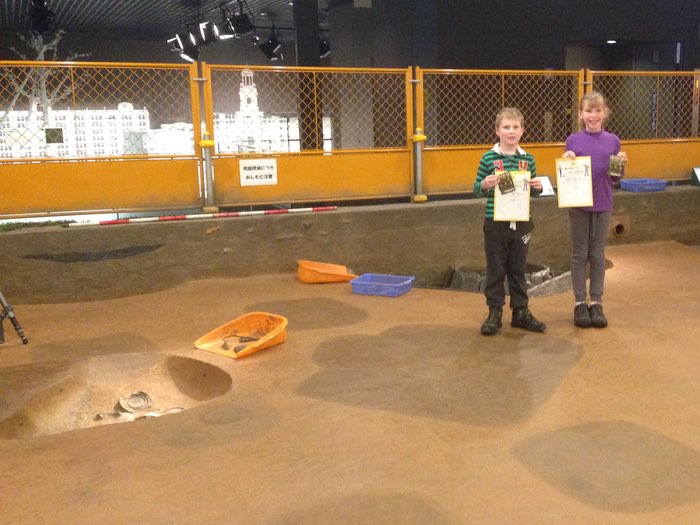
On the next level down we played a quiz style game called “Sugoroku”, it was a lot of fun and we learnt a little more history about Osaka/Japanese history. To play we each chose a counter and rolled the dice. The board was designed in a spiral fashion, we started on the outside edge and the winner was the first to the centre of the board, the Castle. Some spaces had questions, if you answered it correctly you moved forward 3 spaces, if it was incorrect you moved back one space. With a little assistance from our tutor (some “hinto” as he called it) and some picture clues we did ok and had a great time while doing so.

We have a copy of the questions so we may try some out on friends when we get home, but here’s one for now:
The five-storied pagoda at Shittenno-ji Temple, this temple has a very big torii (gate of shinto shrine) at the West gate. Torii is made of ________? 1⃣stone 2⃣wood 3⃣iron
We walked across the road to the Castle and we’re not sure what happened but the wind was absolutely freezing and blowing strongly, we hereafter referred to it as the snow winds.
Japan has vending machines everywhere and we mean everywhere, outside the front of buildings along the street, throughout parks and train stations, just to name a few spots. As we walked through Osaka Castle park and the snow winds were racing through us, we decided to try one of these machines that dispense cans of cold and hot drinks. Today hot chocolates were on the menu. It really was hot and tasted quite good. We can’t believe it only cost 130 yen (~$1.30)!
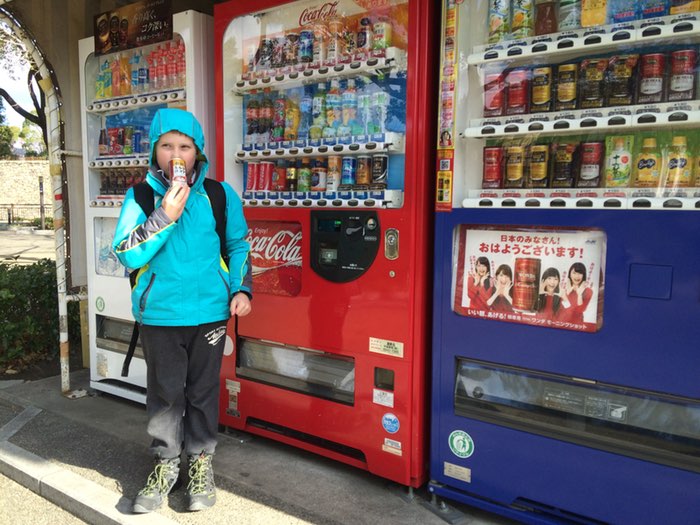
We walked through the gate and noticed the enormous stones in the wall and wondered how on earth they built the wall.
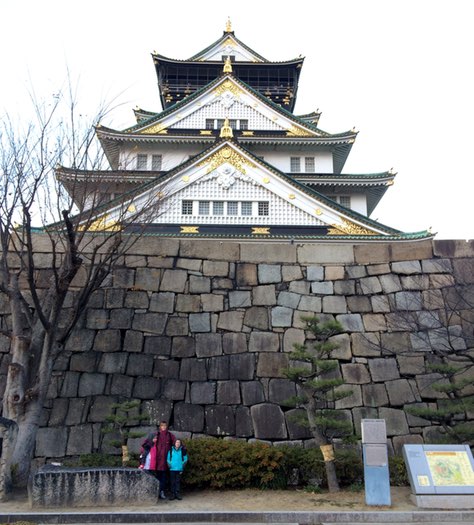
It turns out it is a mystery to the Osaka people as well, as there is no information which documents this.
We enjoyed watching some short films about Hideyoshi Toyotomi and the Castle. Hideyoshi built the Castle in 1583. After his death the political control moved to the Tokugawas and the castle fell during the Summer War in 1615.
The Tokugawa Shogunate reconstructed the Osaka Castle in 1620 and it took 10 years to complete.
War, weather and fires seemed to play havoc with the Castle, as another incident, a lightning strike destroyed the Main Tower in 1665. Fires affected many buildings during the troublesome transition to Imperial restoration.
We liked the Gold Lion which guards the front wall of the castle.
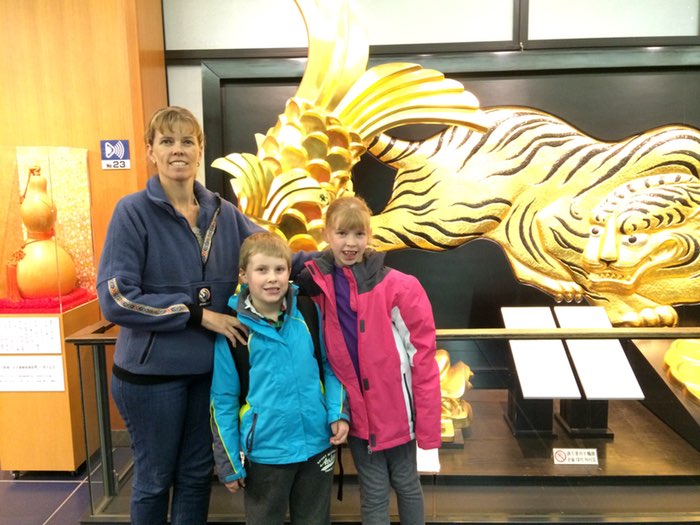
The series of slide shows that explained the life of Hideyoshi Toyotomi from birth to building the Osaka Castle and his achievement in unifying the entire nation was really good.
The view from the top of the Castle across the city was terrific. It was however a very quick lap around the perimeter, as the wind was so strong it was blowing us against the Castle in places, not to mention it was freezing cold!
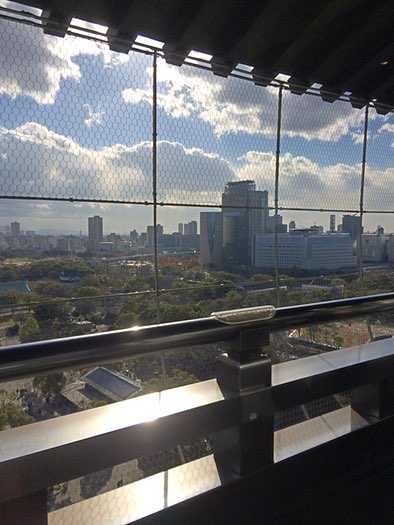
As we walked out of the Castle the wind blew us against the handrail. We had enjoyed learning about the history of Osaka Castle.
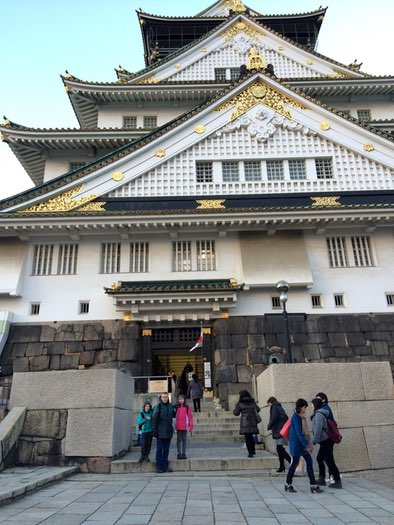
Our next stop was Umeda as we had heard about a great underground shopping centre, perfect for being out of the wind. We found a market style floor of food shops and enjoyed tasting treats. We really liked these purple/black beans sweet treats. Jennifer has loved the bean curd rice rolls and we found a stand that had different flavoured rice fillings. We bought some with rice, mushroom and sesame seeds, they were very nice indeed.
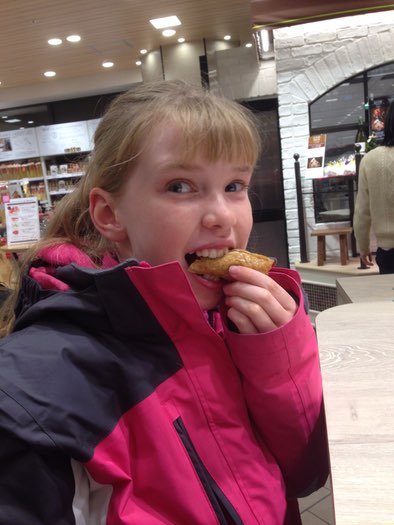
We bought some other yummy foods to try and asked if there was anywhere to sit. The Japanese games that Mr Mackenzie Smith teaches came in handy again as Jennifer and James remembered that “Suwatte kudasai” means to sit please and we were shown the way. The custard Danish (not so Japanese though)!were sensational.

Another new little treat we tried today was called Genjie pie. It is a crunchy light texture, heart shaped pastry which is backed with chocolate, which comes individually wrapped. The packaging says, “Why don’t you make your tea time happier with Genji? Heart Warming Pie”. We did and we were pleased.
As we walked home we noticed it was 2 degrees celsius! We’ve seen lower temperatures but with the snowy winds it was undoubtedly the coldest we had felt so far on this trip.
Answer to Sugoroku quiz = 1⃣stone Hope you were right!